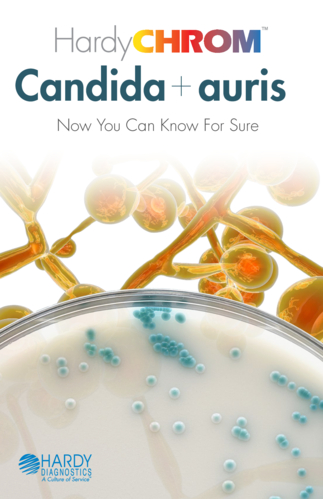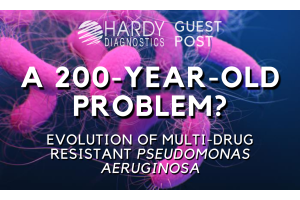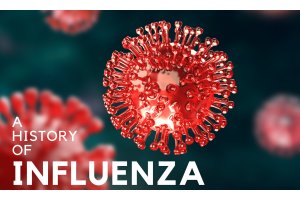Pan-Resistant Candida auris
Candida auris was first described in 2009 and was reported in the United States in 2016.¹ It is a member of a growing group of yeasts that can cause candidiasis. Yeast infections are normally of little consequence, and usually treatable through a number of anti-fungal medications in otherwise healthy individuals. Nosocomial candidiasis, however, can easily infect ports installed in the body (usually in the ICU), and then progress to candidemia, a potentially deadly blood infection.² C. auris is remarkable in that can be multi-drug-pan-resistant and difficult to identify without specific technologies that are not always available in a clinical setting, namely PCR and MALDI-TOF mass spectrometry.³
In 2022, the Centers for Disease Control and Prevention (CDC) sounded the alarm. C. auris cases rose by more than 60% in 2020 as compared to 2019. Acute care hospitals saw more outbreaks of C. auris in 2020 than previous years, especially in COVID-19 units. Post-acute care facilities were heavily impacted by C. auris during the pandemic.⁴
The CDC attributes the rise in C. auris cases during the height of the pandemic as a result of inadequate staffing, supply shortages, the increased number of seriously ill patients, and changes in infection prevention and control practices. The CDC encourages all U.S. laboratories that identify C. auris to notify their state or local public health authorities. CDC’s AR Lab Network is available for assistance with C. auris identification and screening to help improve the detection and response to C. auris nationwide.⁵
In 2021, Hardy Diagnostics introduced it’s novel chromogenic agar plate to detect and easily identify C. auris. Hardy Diagnostics' HardyCHROM™ Candida + auris chromogenic agar plate allows laboratories to easily identify C. auris with a color read out of teal to teal-green colonies with a distinct “bullseye” and shows a unique fluorogenic reaction under UV light. This medium will also identify C. tropicalis, C. glabrata, C. albicans, and C. krusei. Colonies of C. glabrata can be subbed directly to Rapid Trehalose Fermentation Broth or GlabrataQuick for confirmation. UC Irvine presented a scientific poster at ASM Microbe. We invite you to view the poster here.
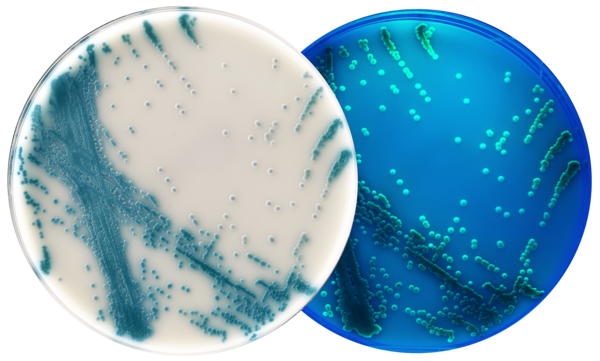
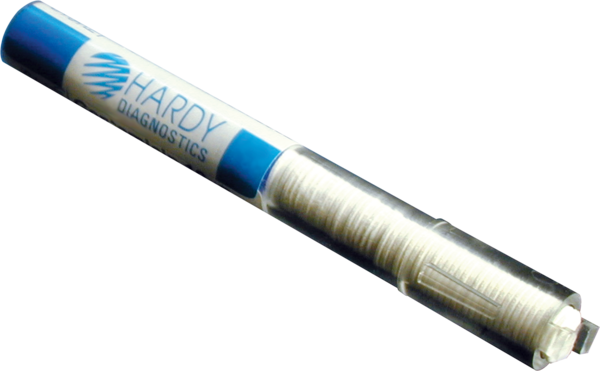
Additionally, in 2023, Hardy Diagnostics’ HardyDisk™ AST Rezafungin was FDA cleared. HardyDisk™ AST’s are impregnated paper disks used for Antimicrobial Susceptibility Testing (AST); also known as disk diffusion or Kirby-Bauer testing. This echinocandin antifungal agent aimed at combatting invasive fungal infections marks the first new treatment option approved for individuals with candidemia and invasive candidiasis in over ten years.
Free Resources
References:
- Candida auris Isolates Resistant to Three Classes of Antifungal Medications — New York, 2019
Morbidity and Mortality Weekly Report (MMWR), January 10, 2020 / 69(1);6–9
https://www.cdc.gov/mmwr/volumes/69/wr/mm6901a2.htm?s_cid=mm6901a2_w - About Invasive Candidiasis
https://www.cdc.gov/fungal/diseases/candidiasis/invasive/definition.html - General Information about Candida auris
https://www.cdc.gov/fungal/candida-auris/candida-auris-qanda.html - https://www.cdc.gov/drugresistance/pdf/covid19-impact-report-508.pdf
- https://www.cdc.gov/fungal/candida-auris/tracking-c-auris.html
Interested in more information? Contact us below!
Meet the author

CLINICAL PRODUCT MANAGER at HARDY DIAGNOSTICS
Megan Roesner, B.A. Journalism and Mass Communications
Megan is a seasoned writer and marketing professional who comes from a background in television journalism, followed by fifteen years leading mulitple hospital marketing and communications teams with the largest not-for-proft health system in the U.S. Megan has won numerous tv, writing and marketing awards and is a member of a number of professional public relations and marketing associations. Her passion for continuous professional challenges and life-long learning led her to Hardy Diagnostics. Megan is proud to work amongst a wonderful marketing team surrounded by experienced microbiologists and scientists who constantly push for the latest and greatest products to help diagnose and detect disease. In her current role, Megan is in charge of product development and marketing Hardy's clinical category which encompasses hospitals and health systems, clinics and research institutions, higher education and veterinary diagnostics. In her free time, Megan enjoys being a mom to her two very active boys, cats, a dog, a very old goldfish and 24 chickens.



